Why The Story of Jack the Ripper is So Popular?
The time: a nine-week period in the fall of 1888, sometimes referred to as “The Autumn of Terror”.
The place: the Whitechapel district of London. That was the east end. Where the slums were. Where prostitutes flourished.
Jack the Ripper: Few names in history are as instantly recognizable. Fewer still, evoke such vivid images: noisy courts and alleys, cabs and gaslights, swirling fog, prostitutes decked out in the tawdriest of finery, the shrill cry of newsboys—and silent, cruel death personified in the cape-shrouded figure of a faceless prowler of the night, armed with a long knife and carrying a Gladstone bag.
And his identity is still unknown—although there’s hardly a year in the 123 since, when a new brainstorm doesn’t emerge. When experts don’t continue to speculate.
I won’t dwell on the many aspects of this saga—it would take up an entire book:
1. The homicides themselves, at least five, usually with terrible brutalization.
2. The victims, all female prostitutes, usually older, usually alcoholic.
3. The investigation—intense, prolonged.
4. The endless theories.
5. The abundance of graffiti.
6. The varied letters and postcards—some considered authentic (i.e., sent by the killer) but most considered hoaxes.
7. The suspects: a mad doctor, a professional butcher, a deranged mid-wife, a mysterious lodger, even a member of royalty.
Actually, so much of The Ripper is mired in mystery and myth. And with the passage of time, much can get (1) exaggerated, (2) embellished upon, or (3) otherwise distorted. I have a simple way of viewing such things: The older a story, the more grains of salt it should be taken with.
But here goes. It’s not very long—quite short and concise, in fact. I’ll simply devote the next several minutes to why The Ripper continues to be discussed—throughout the world. To give you a sense of what it was all about. To scratch the surface, as it were.
I must emphasize, first and foremost, that Jack the Ripper created the myth, representing the evil ark-type of the more modern serial killer, like the ones I covered in an earlier lecture. This isn’t to say that the whole story is a myth—just that the story has been one of mythical proportions.
But by today’s standards of crime, Jack the Ripper would barely make international headlines. What? The murder of five prostitutes in a slum swarming with criminals?
Just one more violent creep satisfying his perverted needs? No, hardly anyone would be incensed over the fate of those five prostitutes as were the respectable families and friends of the pretty college students who were Ted Bundy’s victims. Unfortunately we’ve become a society numbed by horrible crimes inflicted upon many victims.
Why then, are there stories and songs and operas, and movies, and a never-ending stream of books on this one Victorian criminal?
Why are there many Ripperologists and no Bundyologists?
Why is the Ripper story as popular today as it was in Victorian London?
For two main reasons: First, because Jack the Ripper represents the classic whodunit. The story has a terrifying, almost supernatural quality. It’s been said that he came out of the fog, killed violenly by slashing a throat from ear to ear, and disappeared without a trace. And, after his last victim was found, he vanished from the face of the earth.
Yet, over time, much has been distorted and that brings us to the second reason for the continued fascination: mis-impression. As I stated before: exaggerated, embellished upon, and otherwise distorted over time.
In spite of their barbarism, the murders represent a real-life mystery from the era of Sherlock Holmes—the late 1880’s—the bygone, romantic era of high Victorian society, with gaslights and swirling London fog. But get this. Not one single killing took place on a foggy night! Not one single killing had any real relationship to Victorian splendor. And, of all possible coincidences, at the same time these murders were occurring, guess what was thrilling audiences across town at the Lyceum Theater, in the fashionable west end? The Strange Case of Dr. Jekyl and Mr. Hyde.
Together, these two things—a classic whodunit and the Jekyl and Hyde coincidence—gave many people their first awareness of the potential for inherent evil in so-called normal individuals.
Finally, I’ll end this brief account with, first, no hint of who I think the killer was because I haven’t the slightest clue. And, second, with the unabashed claim that if modern forensic tools had been available back then, the mystery would have been easily cracked in short order. Even if the tools were confined to the barest essentials: DNA analysis, fingerprint analysis, and so on.
Just imagine, though—if that had been the case, we wouldn’t have such a lasting melodrama, would we?
And that’s my Ripper Report.

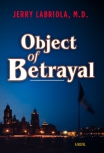
 Discovery
Discovery
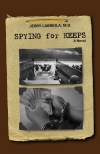 Spying for Keeps
Spying for Keeps
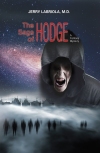 The Saga of Hodge
The Saga of Hodge
 The Blue Baron Mystery
The Blue Baron Mystery
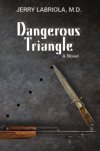 Dangerous Triangle
Dangerous Triangle
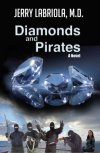 Diamonds and Pirates
Diamonds and Pirates
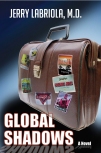 Global Shadows
Global Shadows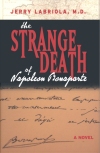 The
Strange Death of Napoleon Bonaparte
The
Strange Death of Napoleon Bonaparte
‘Murders at Hollings General’ is FREE for Amazon Kindle this weekend
Kindle e-book readers can download Jerry Labriola’s 1999 top seller “Murders at Hollings General” for free this weekend from Amazon. The publisher, Strong Books, announces this special promotion for Friday, May 4th through Tuesday, May 8th for the 5-day weekend. Visit Amazon.com
Murders at Hollings General is a medical murder mystery involving a series of bizarre homicides at a major teaching hospital in New England. The first murder takes place in the opening scene in the Operating Room, in full view of staff members. Readers are absolutely captivated by this story’s opening scene. This is the first of three novels that feature Dr. David Brooks, the engaging if somewhat quirky doctor/amateur sleuth.
Strong Books has published six of Jerry’s fiction novels for Kindle Amazon. One murder mystery and three of the true crime books that Jerry co-wrote with renowned forensic scientist Dr. Henry Lee has been published by Prometheus Books.